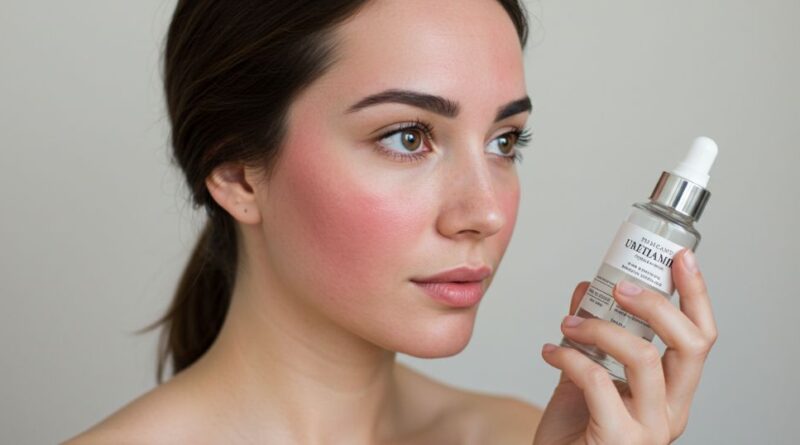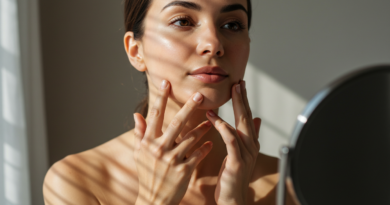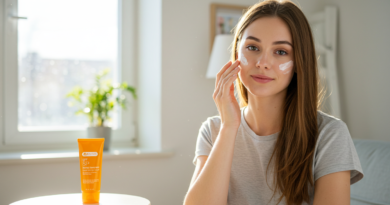What Happens When You Over-Exfoliate Skin And How to Save It
Okay, let’s set the scene. You got a little too excited about that new AHA toner, or maybe you thought exfoliating every day would get rid of your acne faster. And now? You over-exfoliate skin & it turned red, stings when you apply anything, and feels tighter than your skinny jeans after brunch.
Sound familiar?
Congratulations, you’ve entered the Over-Exfoliation Danger Zone something nearly all skincare lovers experience at some point. Don’t panic. Your face isn’t ruined forever. But it is screaming for help.
This is your complete guide to figuring out if you’ve overdone it, what’s actually happening to your skin, and exactly how to fix it like a barrier-repairing pro.
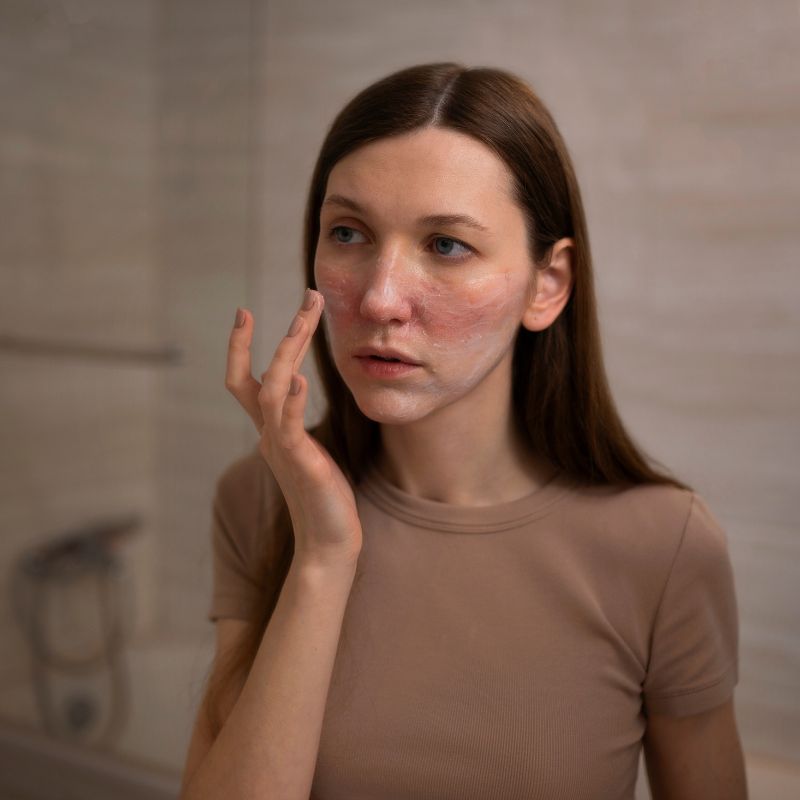
First—What Is Exfoliation Anyway?
Exfoliation is the process of removing dead skin cells from the surface of your skin. Done right, it reveals brighter, smoother, more even skin and helps your products work better.
There are two main types:
1. Physical Exfoliation:
Think scrubs, brushes, or textured pads. They manually slough off dead skin.
2. Chemical Exfoliation:
These include acids like AHAs (glycolic, lactic), BHAs (salicylic), and PHAs. They dissolve the “glue” that holds dead skin cells together.
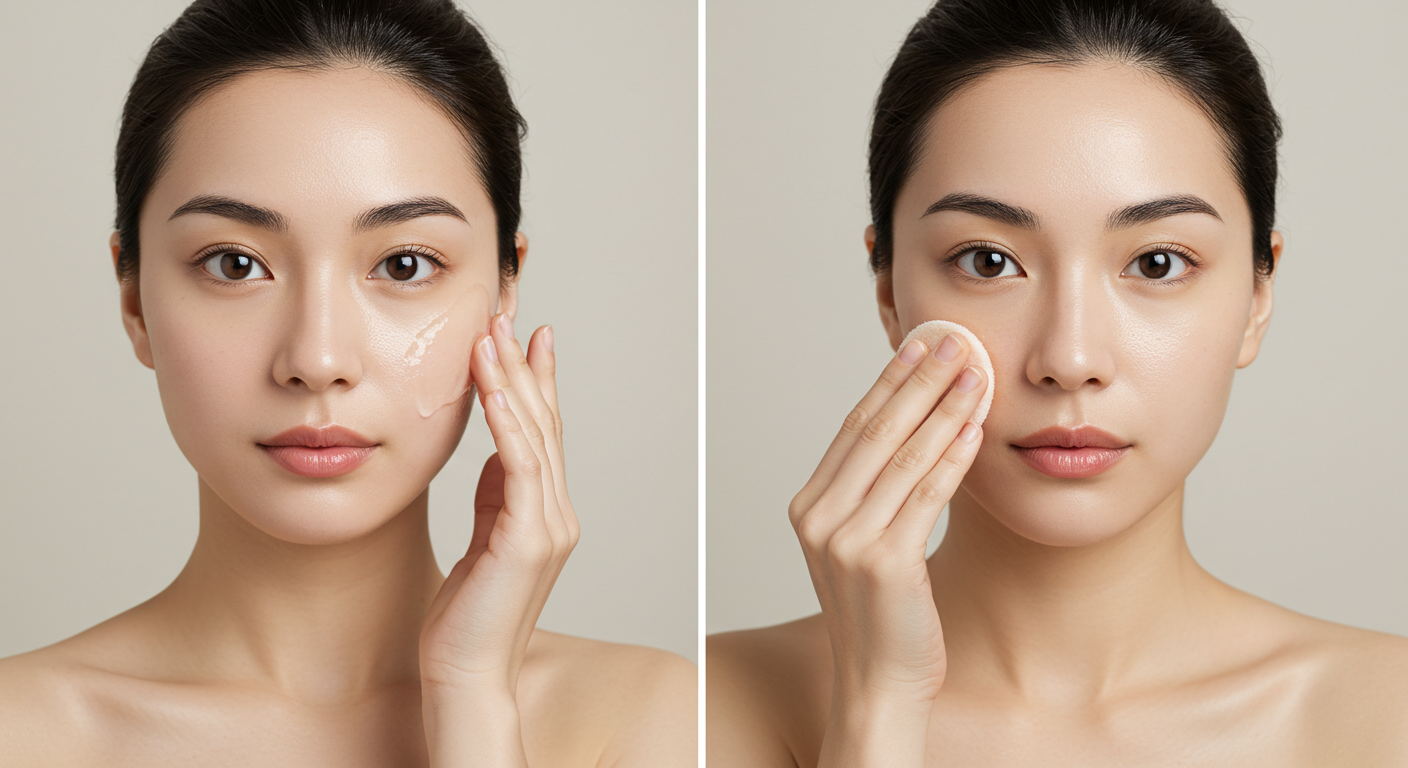
Both are great… until they’re not.
How Do You Know If You’ve Over-Exfoliated?
Here’s what to watch for. If you’re nodding along to any of these, your skin is waving a white flag.
Common Signs of Over-Exfoliation:
-
Redness or burning sensation (even when applying plain moisturizer)
-
Skin feels tight, dry, or itchy
-
Stinging or tingling when applying skincare
-
Increased breakouts or sensitivity
-
Peeling or flaking (not the good kind)
-
Skin looks shiny—but not in a glowy way. It’s raw.
-
Your products suddenly “don’t work” anymore
Translation: Your skin barrier is damaged.

Wait… What’s the Skin Barrier and Why Does It Matter?
Imagine your skin barrier as your face’s personal bouncer. It keeps moisture in and irritants out.
Over-exfoliating strips that barrier down like sandpaper on wood. Without it? Your skin becomes vulnerable, inflamed, and easily irritated. Not cute.
What Happens Beneath the Surface When You Over-Exfoliate
Let’s nerd out for a sec.
When you exfoliate too often or with too-strong products:
-
You remove healthy skin cells, not just dead ones.
-
Your skin’s lipid barrier weakens, leading to TEWL (transepidermal water loss).
-
Inflammation rises. Your skin starts producing more oil or breaks out as a defense.
-
Collagen production might stall because the skin is in distress mode.
Basically, your skin is throwing a tantrum and it’s totally valid.

The Recovery Plan: How to Save Your Skin (and Sanity)
Good news: Your skin is smart. It can heal—but only if you stop the attack and switch to a recovery mode.
Step 1: Stop Exfoliating. Immediately.
Yes, even the “gentle” one. Give your skin at least 5–7 days off from all acids, scrubs, peels, retinoids—basically anything active.
Let your skin breathe. Right now, less is more.
Step 2: Simplify Your Routine
Your current vibe? Think “skincare on a juice cleanse.” Only the essentials.
Here’s a bare-bones recovery routine:
AM:
-
Gentle Cleanser (no actives or fragrance)
-
Hydrating Toner or Mist (optional, but soothing)
-
Barrier-Repair Moisturizer (look for ceramides, peptides, squalane)
-
Mineral Sunscreen (SPF 30+, no chemical filters)

PM:
-
Cleanser
-
Optional mist/essence
-
Moisturizer (again, barrier repair ingredients)
-
Slugging with Vaseline or balm (only if skin feels super dry)
Step 3: Replenish and Rehydrate
Look for ingredients that feed your skin:
-
Ceramides: Restore the lipid barrier
-
Panthenol (B5): Calms inflammation
-
Squalane: Lightweight hydration
-
Centella Asiatica: Heals and soothes
-
Aloe Vera: Natural anti-inflammatory
Pro Tip: Avoid essential oils, drying alcohols, and heavily fragranced products while your skin heals. They’ll just make it worse.
When Can You Exfoliate Again?
Once your skin feels calm, hydrated, and no longer sensitive—and stays that way for a week—you can consider reintroducing exfoliation.
But ease in gently:
-
Start once a week
-
Use one type (AHA or BHA—not both)
-
Use a low concentration
-
Follow with a rich moisturizer
You want to rebuild trust with your skin. Don’t rush it.
How to Never Over-Exfoliate Again (aka Learn From This)

Pro Tips to Stay Safe:
-
Listen to your skin, not trends. If it’s burning or stinging, that’s not “it’s working”—it’s “it’s irritated.”
-
Check your products. Many cleansers, toners, and even moisturizers sneak in exfoliating ingredients. Don’t double up accidentally.
-
Rotate, don’t stack. Use retinol or AHA. Not both in the same routine (unless your skin is a trained athlete).
-
Moisturize more than you exfoliate. Seriously. This is the golden rule.
Product Picks for Barrier Repair MVPs
If you’re recovering from over-exfoliation, these are your new BFFs:
-
La Roche-Posay Cicaplast Baume B5
-
Dr. Jart+ Cicapair Tiger Grass Cream
-
The Ordinary Natural Moisturizing Factors + HA
-
First Aid Beauty Ultra Repair Cream
-
Vanicream Moisturizing Cream (great for super sensitive skin)
Your Skin Deserves a Breather
Over-exfoliation happens to the best of us. It’s easy to get caught in the cycle of “more is better”—but when it comes to skincare, balance is everything.
Your glow doesn’t come from scrubbing your skin raw. It comes from treating it with kindness, consistency, and a little patience.
So take a deep breath, put down the acid, and let your skin heal. You’ll bounce back stronger, smoother, and a whole lot wiser.
Explore more beauty posts here
